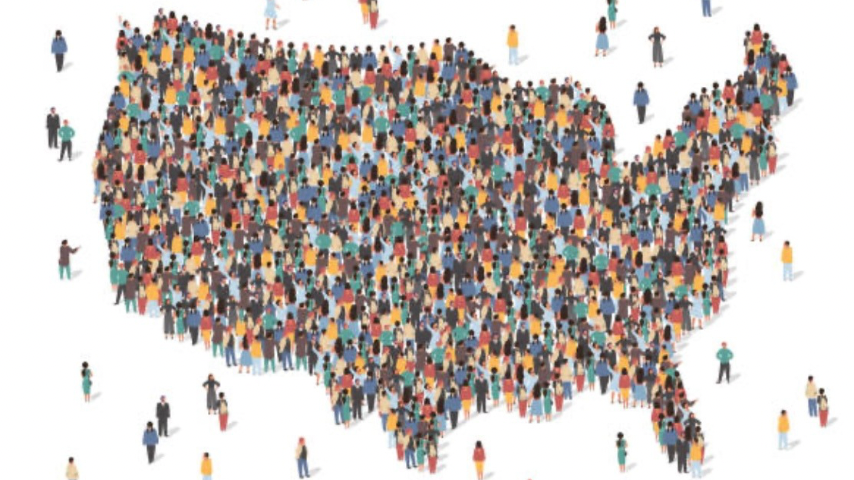A census is a systematic collection of demographic, economic, and social data pertaining to a specific population or region at a particular point in time. It can also be defined as the counting of the population of a nation, state or region. The aim is to gather comprehensive information about the characteristics of individuals or households within a defined area. Typically, governments conduct censuses to aid in policy-making, resource allocation, urban planning, and demographic analysis.
Types of Censuses:
1. Population Census:
Definition: A population census is the most common type and involves collecting demographic data on all individuals residing in a specific geographical area.
Steps:
1.Preparation: Governments prepare extensively by designing questionnaires, training enumerators, and establishing data collection procedures.
2.Data Collection: Enumerators visit every household, institution, or dwelling unit within the designated area to record information on individuals’ age, sex, education, employment, marital status, ethnicity, and other relevant factors.
3.Processing: Collected data undergoes thorough processing to ensure accuracy and consistency.
4.Analysis: Once processed, the data is analyzed to derive insights into population trends, distribution, and characteristics.
2. Housing Census:
Definition: A housing census focuses primarily on gathering data related to housing units, such as the number of dwellings, their types, amenities, occupancy status, and structural conditions.
Steps:
1.Preparation: Similar to a population census, thorough planning and preparation are essential, including questionnaire design and enumerator training.
2.Data Collection: Enumerators visit each housing unit to collect information about its characteristics, occupants, and any other relevant details.
3.Processing: Collected data is processed to identify housing trends, assess housing needs, and inform urban development strategies.
4.Analysis: Analyzing the data helps policymakers understand housing patterns, housing quality, and the demand for housing infrastructure.
3. Economic Census:
Definition: An economic census is geared towards gathering data on economic activities, including industries, businesses, agriculture, and employment.
Steps:
1.Preparation: Extensive planning involves defining the scope of economic activities to be covered, designing questionnaires, and training enumerators.
2.Data Collection: Enumerators visit businesses, farms, and other economic entities to collect information on their operations, workforce, production, and financial status.
3.Processing: Collected data undergoes meticulous processing to extract insights into economic trends, sectoral contributions, and employment patterns.
4.Analysis: Analyzing economic census data helps policymakers formulate economic policies, support specific industries, and stimulate economic growth.
4. Agricultural Census:
Definition: An agricultural census focuses exclusively on collecting data related to agricultural activities, including land use, crop production, livestock, and farming practices.
Steps:
1.Preparation: Governments plan the census by defining agricultural variables to be measured, designing questionnaires, and training enumerators with agricultural expertise.
2.Data Collection: Enumerators visit farms, ranches, and agricultural establishments to gather information on land holdings, crop cultivation, livestock inventory, and farming methods.
3.Processing: Collected agricultural data undergoes specialized processing to assess agricultural productivity, land distribution, and the contribution of agriculture to the economy.
4.Analysis: Analyzing agricultural census data helps policymakers formulate agricultural policies, allocate resources efficiently, and support rural development initiatives.
5. Social Census:
Definition: A social census aims to collect data on social indicators such as education, healthcare, poverty, housing conditions, and social welfare programs.
Steps:
1.Preparation: Planning involves identifying key social indicators, designing questionnaires, and training enumerators with expertise in social data collection.
2.Data Collection: Enumerators visit households and institutions to gather information on education levels, healthcare access, poverty status, housing conditions, and participation in social programs.
3.Processing: Collected social data undergoes processing to assess social needs, monitor the effectiveness of social programs, and identify vulnerable populations.
4.Analysis: Analyzing social census data helps policymakers design and evaluate social policies, allocate resources to address social disparities, and improve the overall well-being of the population.
Conclusion:
Censuses play an important role in providing governments, policymakers, researchers, and other stakeholders with comprehensive data for informed decision-making and planning. By understanding the various types of censuses and their respective methodologies, societies can better address the needs and challenges of their populations, promote sustainable development, and foster inclusive growth.

